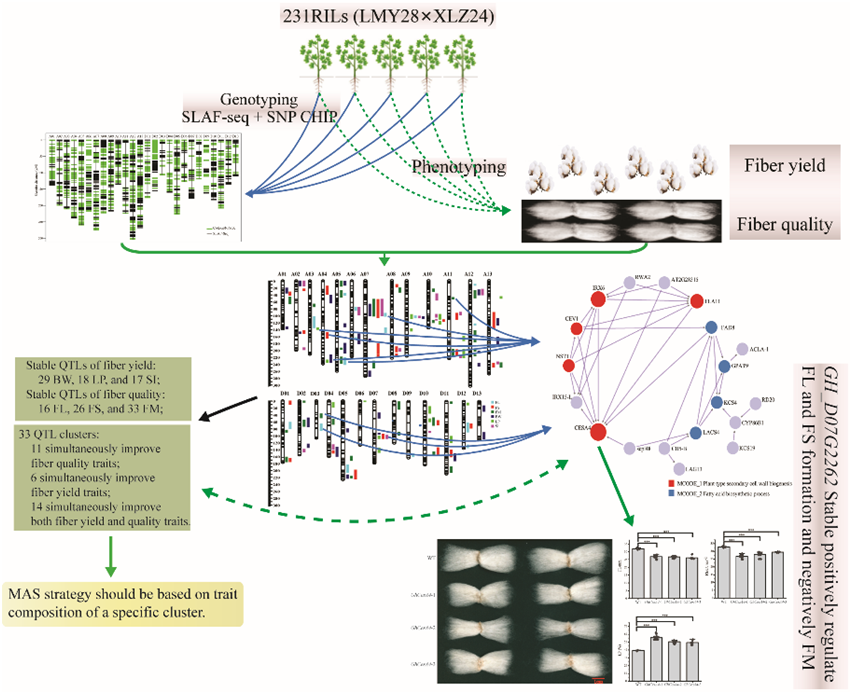- Location : Home» Newsroom
Identification ofa key gene that regulates the negative correlation between cotton yield and fiber quality
Recently, a paper entitled “Genetic linkage analysis of stable QTLs in Gossypium hirsutum RIL population revealed function of GhCesA4 in fiber development”has been published by theJournal of Advanced Research. In the paper,researchers from theInstitute of Cotton Research (CCRI) reportidentified a gene that simultaneously regulates the negative correlation between cotton yield and fiber quality, via linkage analysis between phenotypes and high-density genetic map using recombinant inbred lines of upland cotton.
Upland cotton is the world's largest natural fiber crop. Collaborative improvement of upland cotton yield and fiber quality has always been an important challenge in cotton breeding. Therefore, dissecting the genetic basis of the negative correlation between upland cotton yieldand fiber quality, and identifying key genes for regulation, is of great significance.
In this study, through combined analysis of high-density genetic linkage maps, multi-environmental phenotype data and transcriptome study, GH_D07G2262 (cellulose synthase 4 gene, CesA4) was identified to simultaneously regulate the formation of fiber quality and yield traits.Preliminary functional validation was conducted using gene silencing (VIGS) and gene editing (CRISPR-Cas9) techniques, and the results showed that GH_D07G2262 gene positively regulates the formation of fiber strength, while negatively regulating the formation of lint percentage. These findings further elucidate the genetic basis for the negative correlation between fiber quality and yield in upland cotton, providing genetic resources for multi-trait collaborative improvement in upland cotton.
This study was funded by theNational Natural Science Foundation of China (32070560, 32070563), China Agriculture Research System of MOF and MARA, the National Agricultural Science and Technology Innovation Project for Chinese Academy of Agricultural Sciences (CAAS-ASTIP-2016-ICR), Central Public-interest Scientific Institution Basal Research Fund (CN) (1610162023013), and the Natural Science Foundation of Xinjiang Uygur Autonomous Region (2021D01B114), as well as theTalent Development Program for Innovation and Expansion in Xinjiang for Youlu Yuan Group.Ph.D. studentLiu Ruixian is the first author of the paper. Prof. Yuan Youlu, Associate Prof. Gong Wankui from the Institute of Cotton Research and Professor Chen Quanjia from Xinjiang Agricultural University are the co-corresponding authors.
The article can be found: https://doi.org/10.1016/j.jare.2023.12.005
